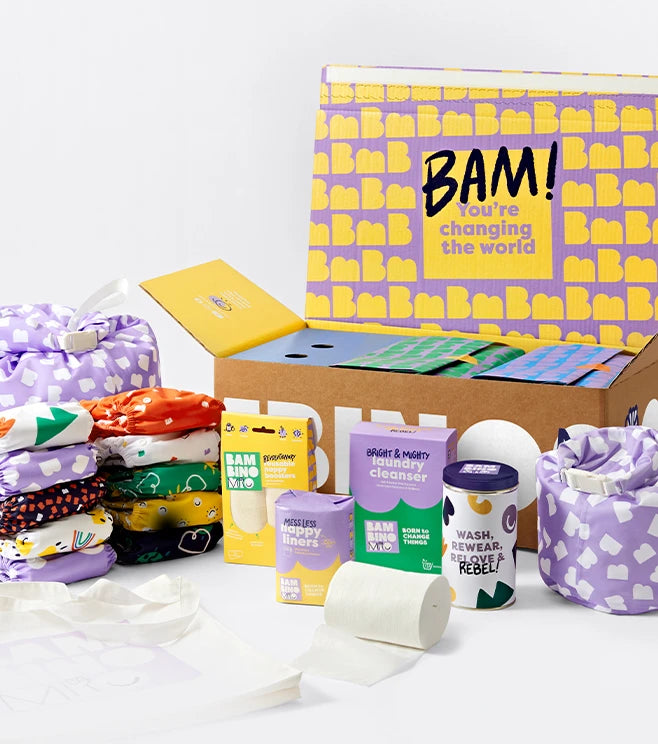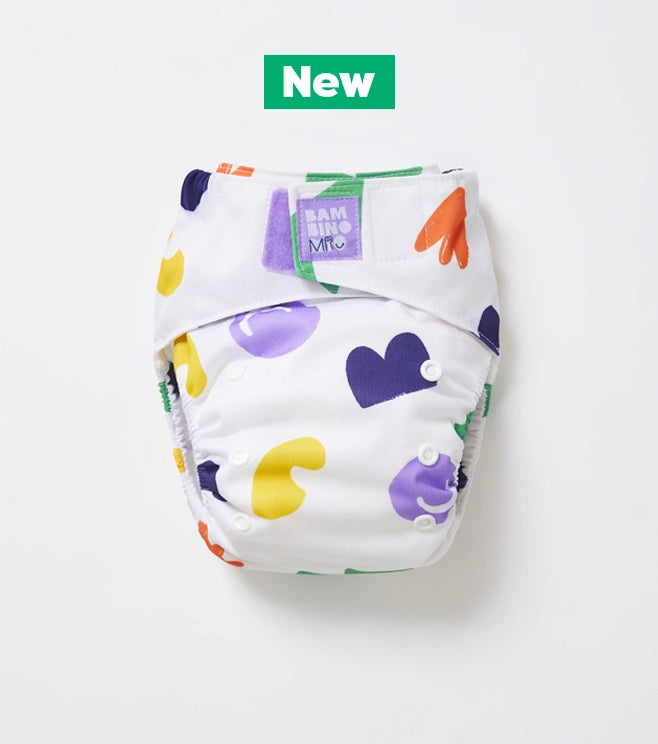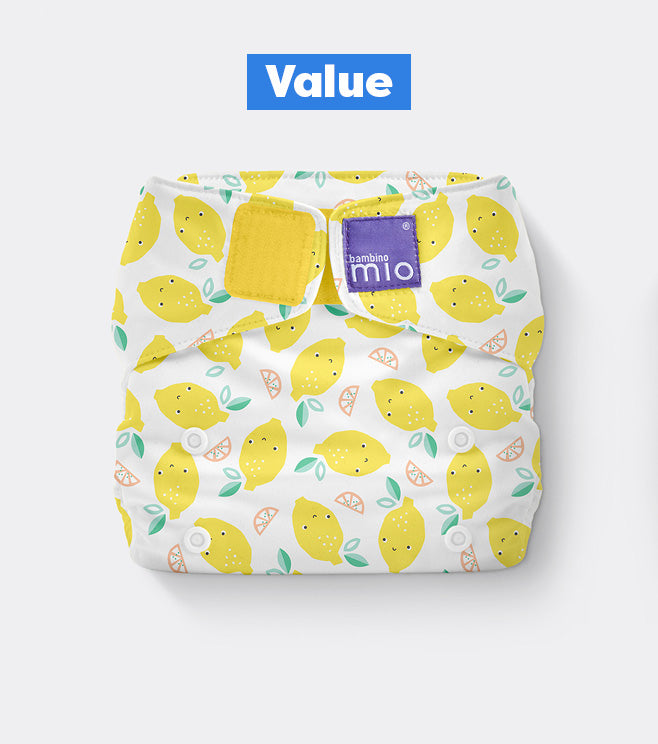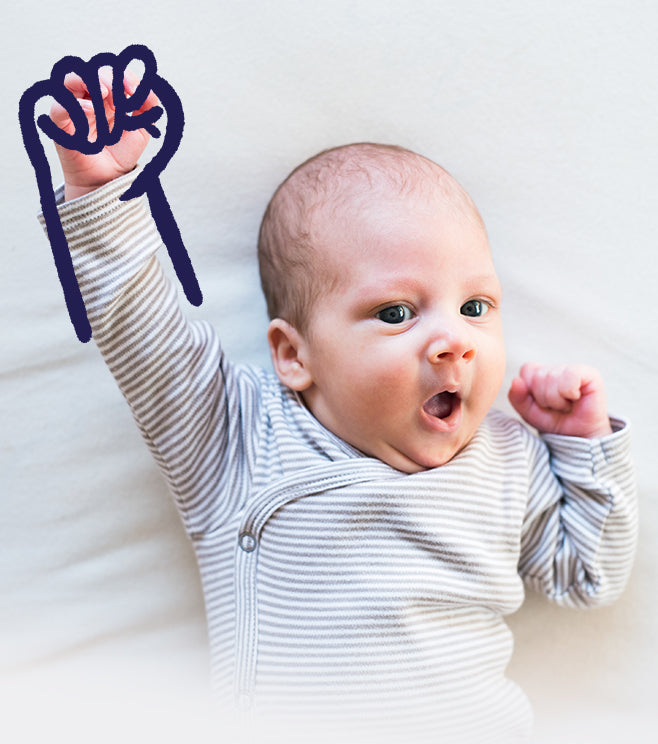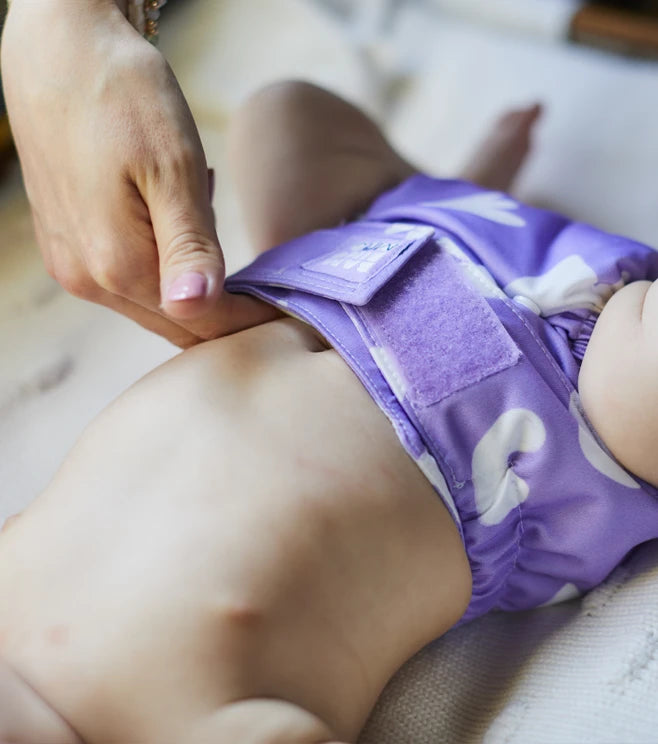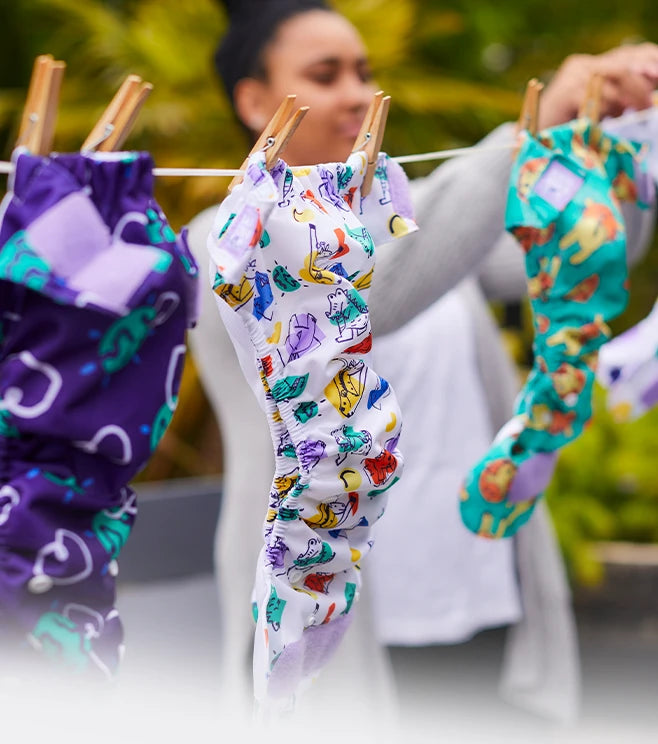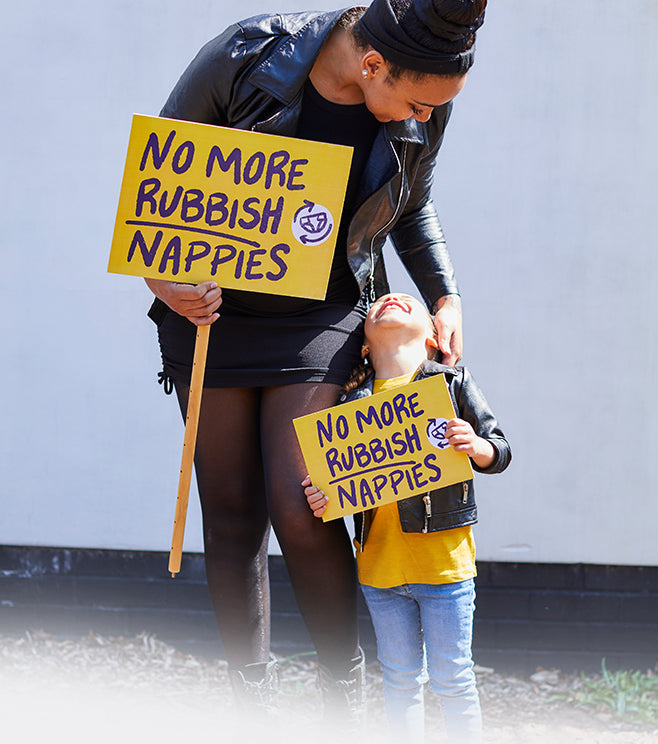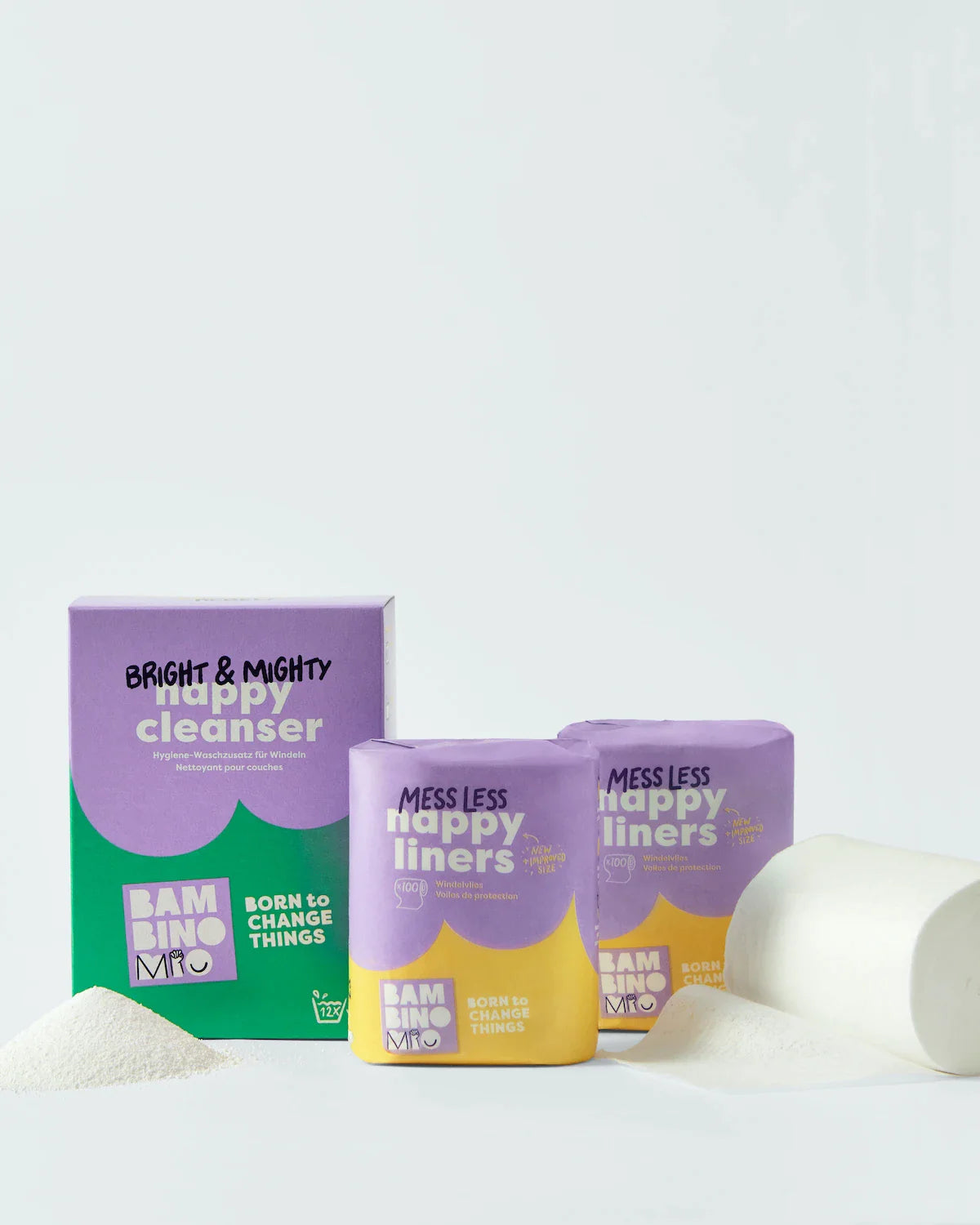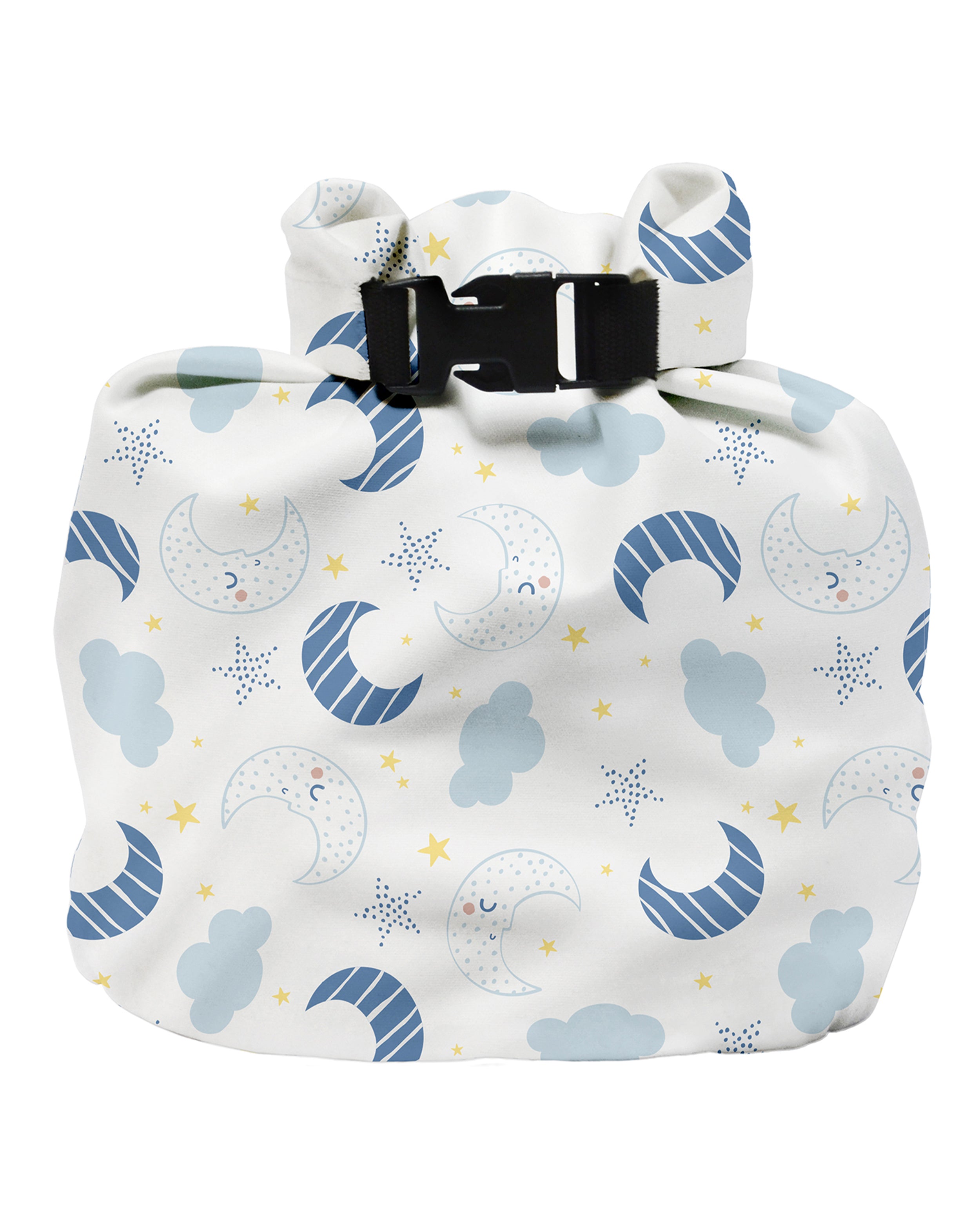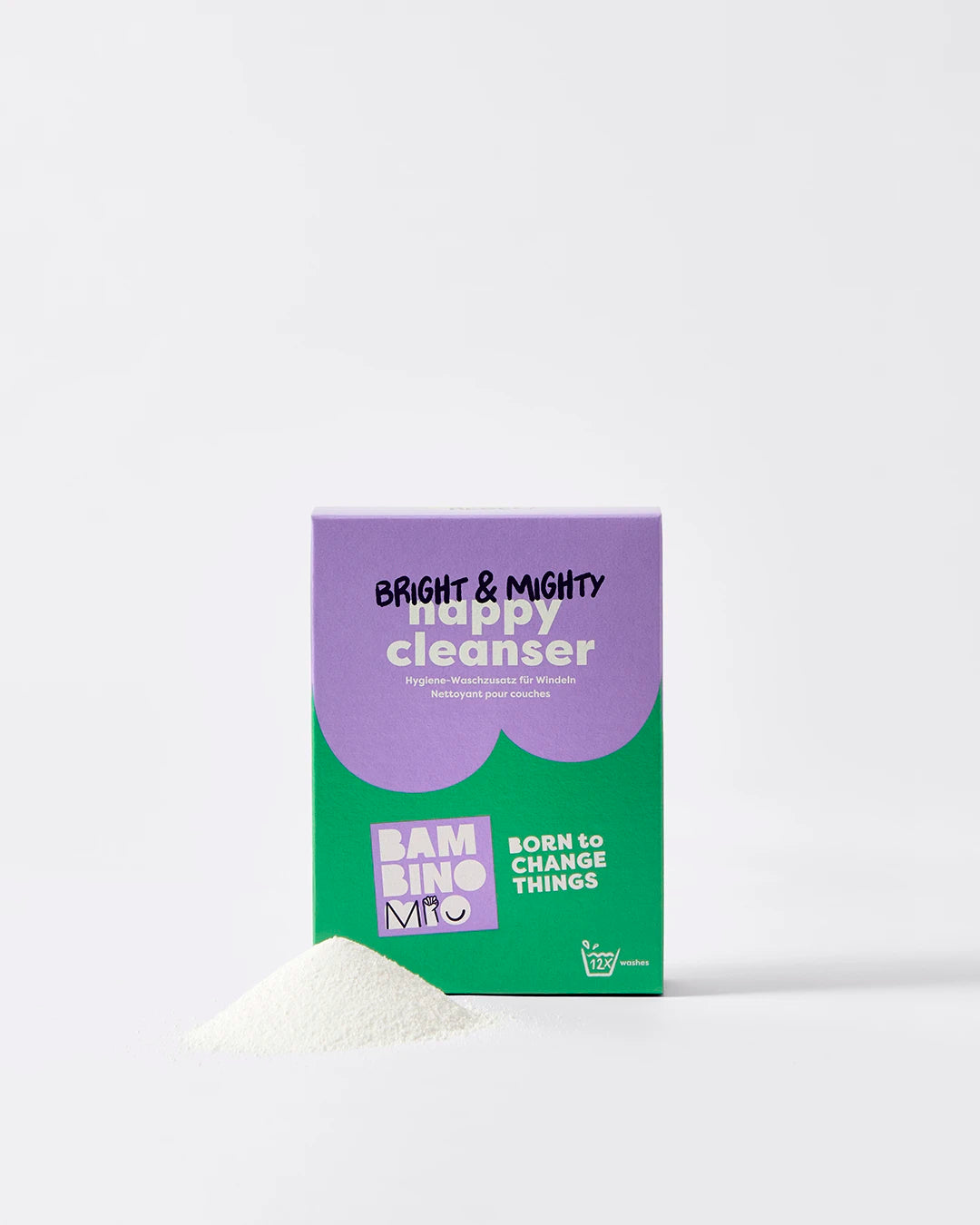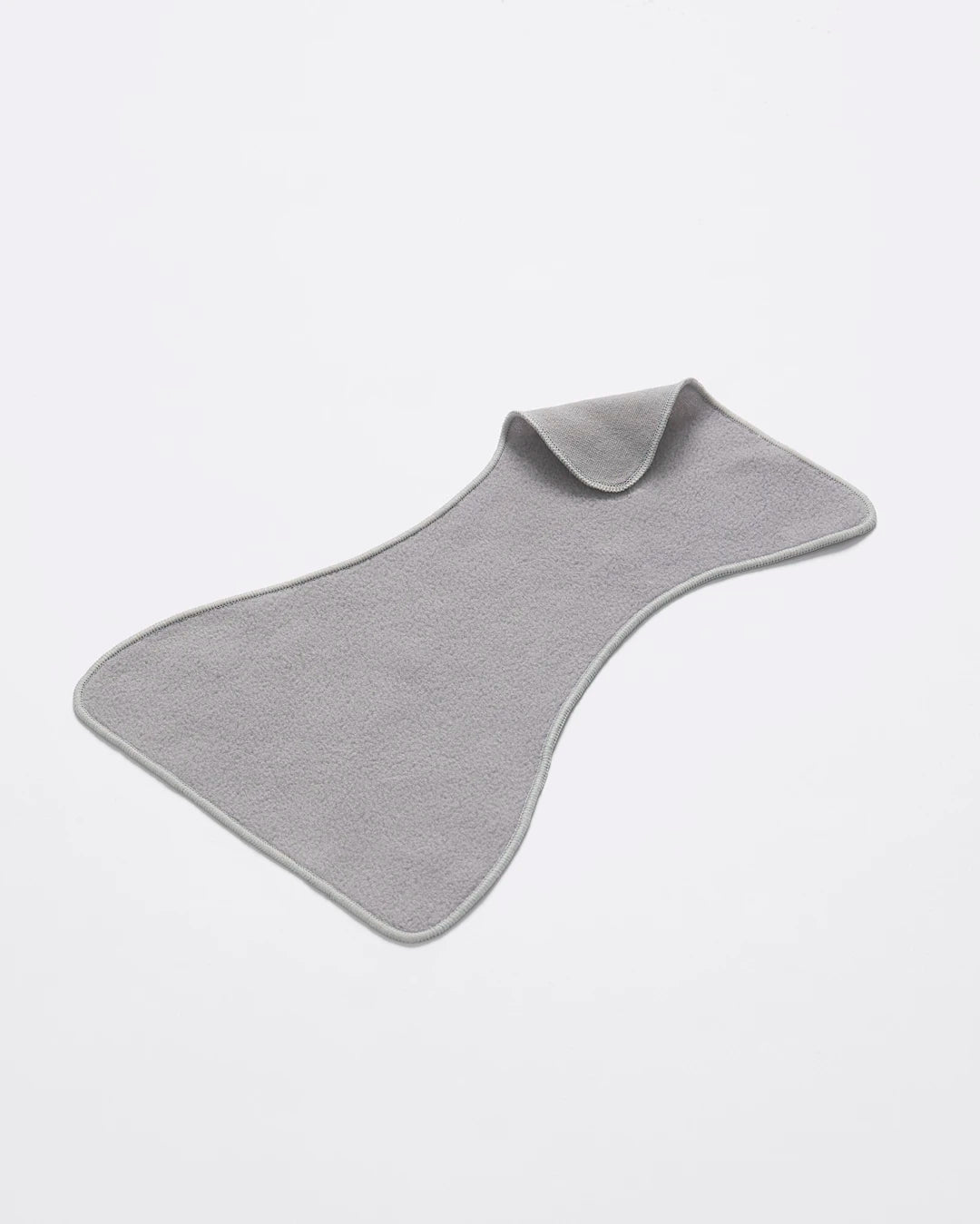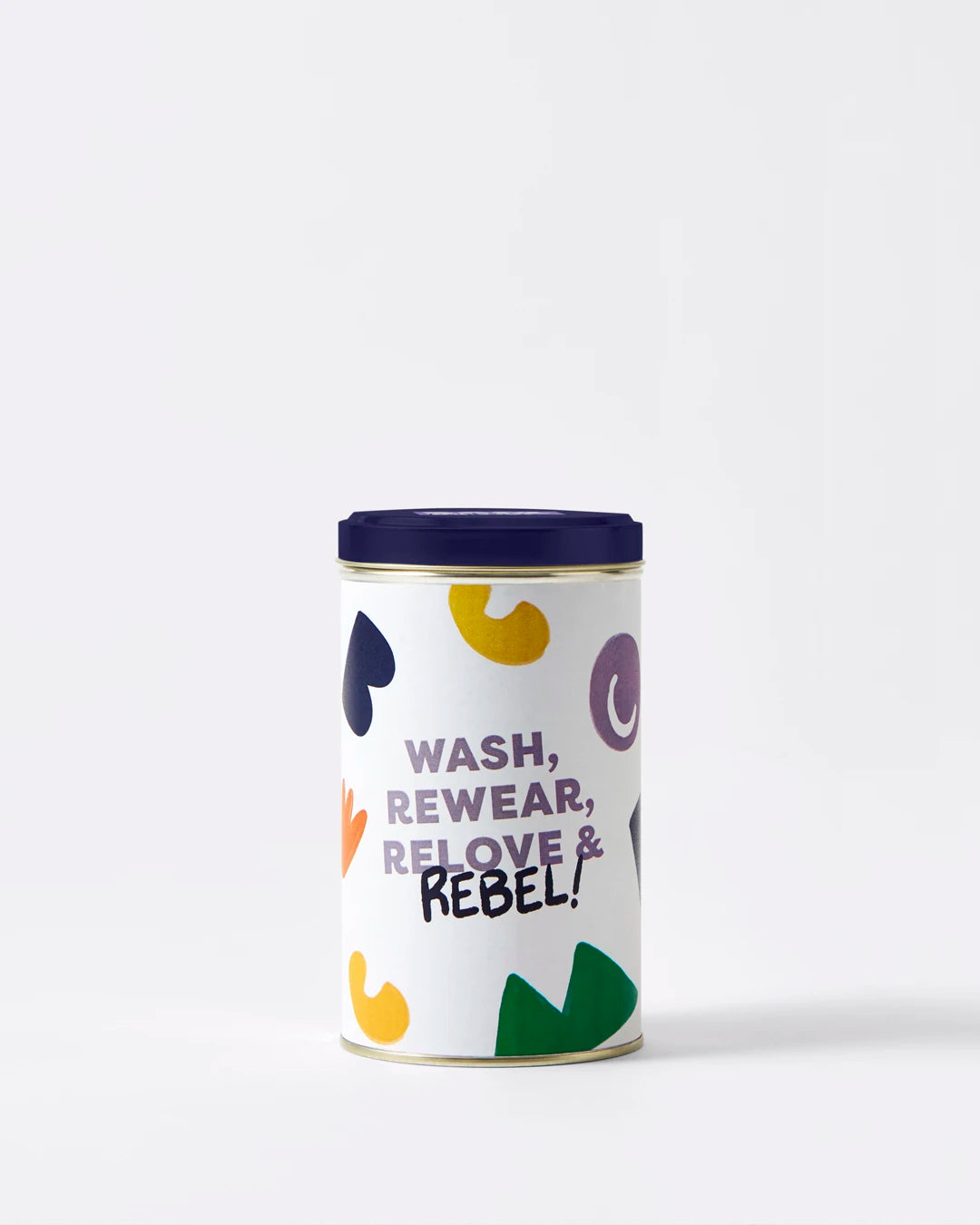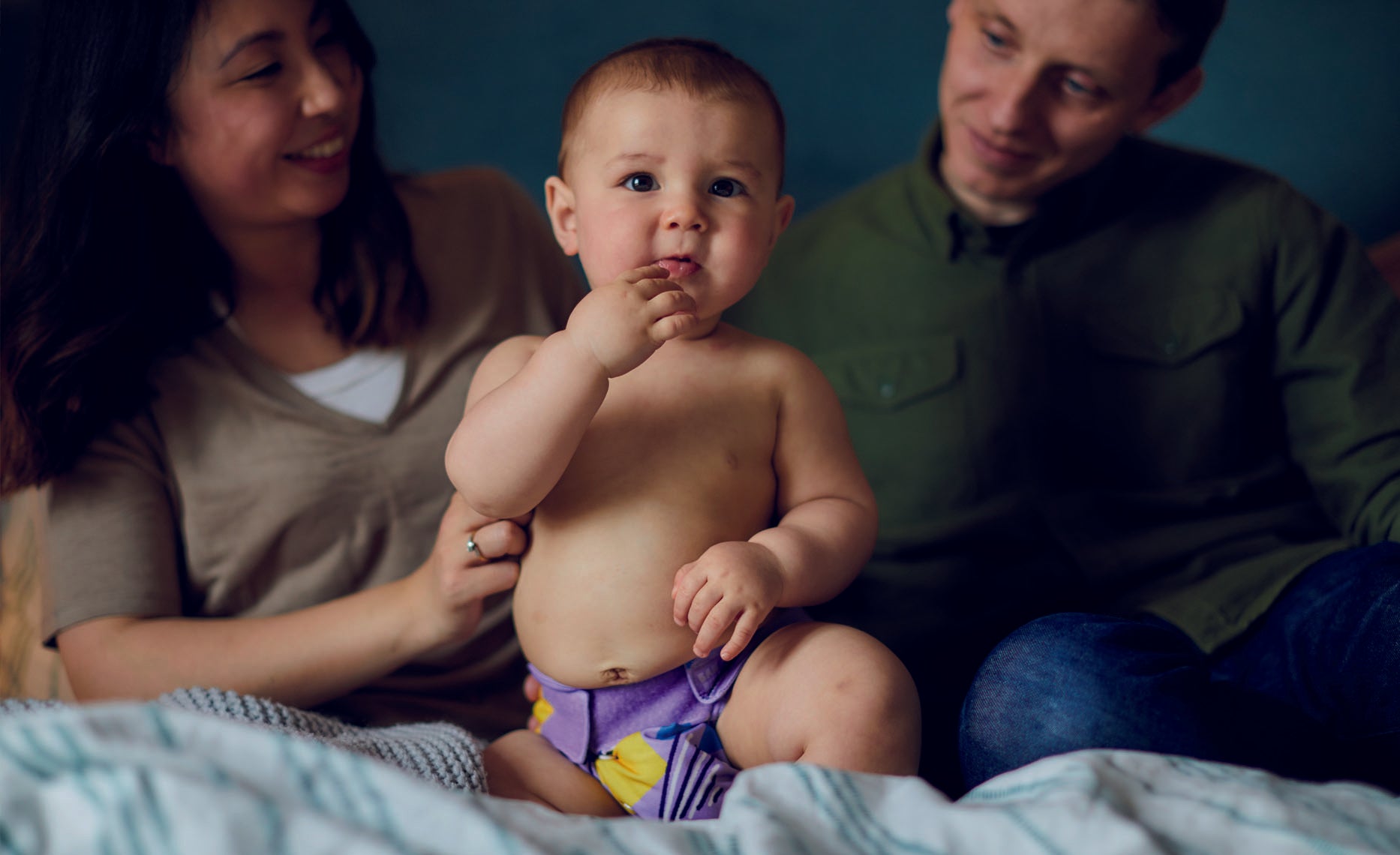How to Prevent Nappy Rash When You’re Using Reusable Nappies
Share Options
- Bambino Mio
- 09 / 11 / 2023

Inside this Article:
- What causes nappy rash?
- Change your baby’s cloth nappies regularly
- Clean your baby’s nappy area thoroughly
- Use a moisture-wicking liner in each nappy
- Build in some no-nappy time
- Don’t use irritating baby wipes
- Use a gentle barrier cream
- Wash your reusable nappies very carefully and thoroughly
- Keep an eye on your baby’s diet
- Citations and References
Almost all babies experience nappy rash (1) at some point before they’re potty trained. Wherever there’s a nappy (reusable or single use), there’s a rash waiting in the wings so the trick is to make sure you outwit it at every turn.
What causes nappy rash?
Nappy rash is almost always caused by a combination of wetness from urine and the ammonia produced by bacteria feeding on the nitrogenous compounds in the urine (2). If your baby’s skin is exposed to this mixture for too long, nappy rash could develop.
Other causes of nappy rash include an allergy or sensitivity (3) to the chemicals in single-use nappies or to detergent residue in your washable nappies. More rarely, your baby’s nappy rash might be down to a food allergy (4).
Here’s eight easy ways to reduce the risk of nappy rash with reusables
Change your baby’s cloth nappies regularly
The best way to prevent or reduce the frequency of nappy rash is to change your baby’s washable nappy very regularly. Washable, or reusable, nappies use physical absorption rather than gel absorption to hold in your baby’s wee so they need to be changed more frequently than single-use nappies.
You should aim to check your baby’s nappy for wetness every hour or so and to change their nappy every two hours whether it’s noticeably wet or not. If you notice that your baby has pooed, then you should change them immediately.
During the nappy change, you should let your baby’s bottom dry thoroughly before you put the fresh nappy on. A bit of fresh air can really help to prevent nappy rash and your baby will appreciate this “free” time.
Clean your baby’s nappy area thoroughly
Of course you’ll wipe away poo and any obvious wee, but you should make sure your baby’s bum is squeaky clean and dry. Removing any waste residue will help to reduce the risk of nappy rash - just use a clean reusable wipe with plain water.
Use a moisture-wicking liner in each nappy
Excess moisture is one of the main causes of nappy rash, so wicking away urine from your baby’s skin will help a lot. Bambino Mio’s reusable liners will wick your baby’s wee away from their skin and into the absorbent core of their Revolutionary Reusable nappy, keeping your baby’s bum dry until change time.
Build in some no-nappy time
Give your baby some nappy-free time between changes. Even a couple of minutes a few times a day will do and as your baby gets older and wees less frequently, you can extend these periods.
Nappy-free time lets your baby’s skin “breathe” and gives them some time without the friction of their nappies (even the most comfortable of nappies can rub a bit every now and then). If you see any redness or irritation developing, make sure you offer a bit more nappy-free time.
Don’t use irritating baby wipes
You should avoid baby wipes which feature fragrances or any other harsh chemicals as these can irritate and inflame your baby’s skin and make it more prone to nappy rash.
Reusable wipes and plain water are all you need to clean your baby’s bottom and nappy area - for “blowout” situations, the bath is your best friend.
Use a gentle barrier cream
A natural bum cream is also a great help in preventing nappy rash. A nappy cream will create a physical barrier between your baby’s skin and any wetness or ammonia build up. You should always use a nappy liner if you’re using a bum cream, to prevent the cream from working its way into the nappy fabric as this might reduce its absorbency.
Do choose your baby’s nappy cream carefully, though, as some might contain fragrances or petroleum products, which can irritate or dry out your baby’s delicate skin.
Wash your reusable nappies very carefully and thoroughly
Your reusable nappies need a long wash and an extra rinse at the end to make sure they’re really clean and that there’s no detergent residue left behind. Detergent residue can build up in the fabric of your reusable nappies and it can cause skin irritation and even allergic reactions.
You should also wash dirty nappies within two days to avoid ammonia damage and bacterial build up.
Keep an eye on your baby’s diet
Your baby’s diet can (unsurprisingly) have an effect on their poo. If they eat a lot of fruit one day, they’ll probably poo more frequently and this poo might contain more acid and digestive enzymes (5) than usual - both of which can affect your baby’s skin.
On days like this, make sure you change pooey nappies ASAP and offer more nappy-free time to help your baby’s skin recover a little between changes.
Citations and References
(1) National Health Service (NHS). ‘Caring for a Newborn Baby. Nappy Rash.’ 2023. Web. www.nhs.uk/conditions/baby/caring-for-a-newborn/nappy-rash
(2) National Health Service (NHS). ‘Urea.’ 2022. Web. www.southtees.nhs.uk/services/pathology/tests/urea
(3) National Health Service (NHS). ‘Health A to Z. Contact Dermatitis.’ 2023. Web. www.nhs.uk/conditions/contact-dermatitis
(4) National Health Service (NHS). ‘Food Allergies in Babies and Young Children.’ 2021. Web. www.nhs.uk/conditions/baby/weaning-and-feeding/food-allergies-in-babies-and-young-children
(5) Healthline. ‘What Are Digestive Enzymes and How do they Work?’ 2023. Web. www.healthline.com/health/exocrine-pancreatic-insufficiency/the-role-of-digestive-enzymes-in-gi-disorders


